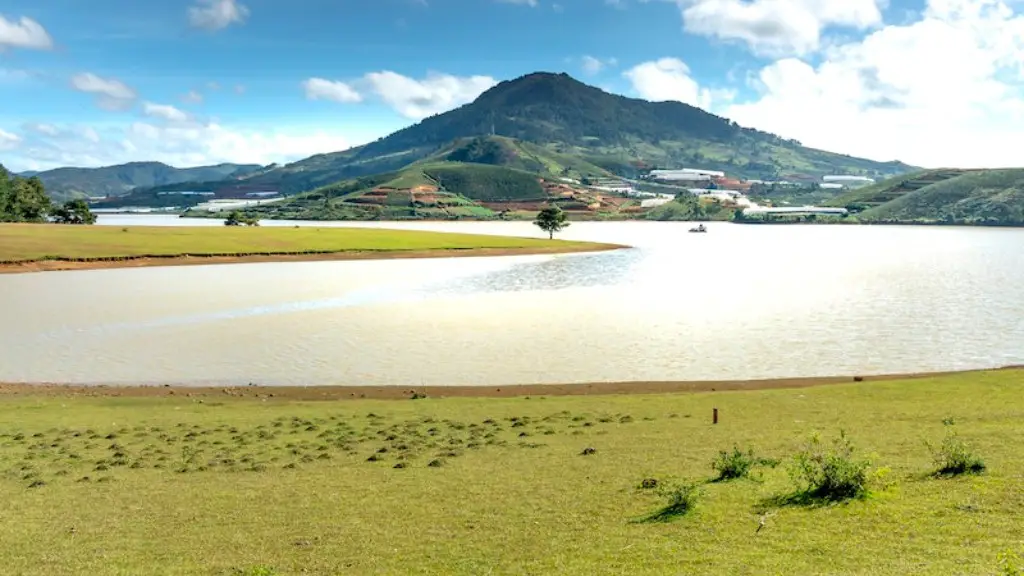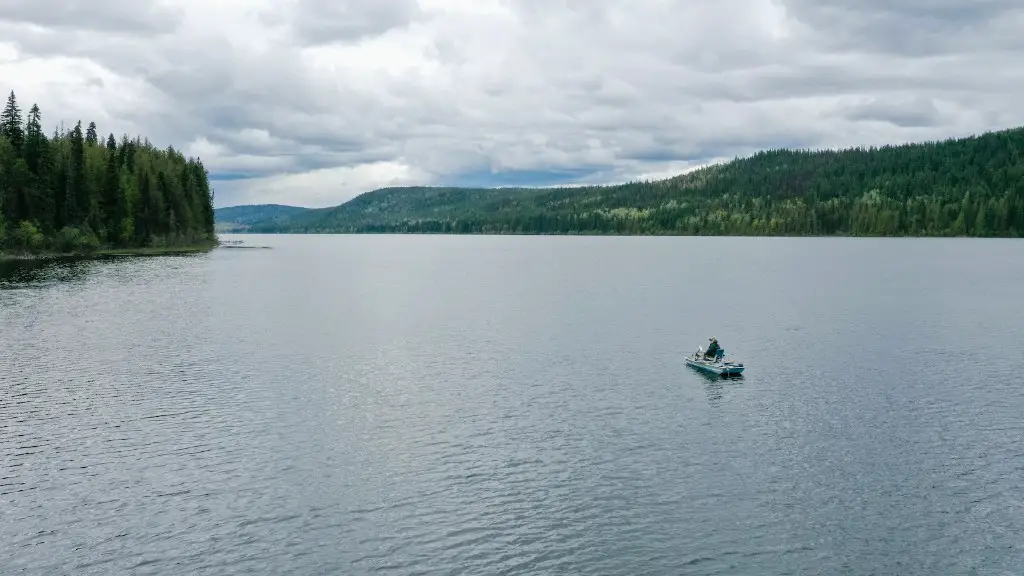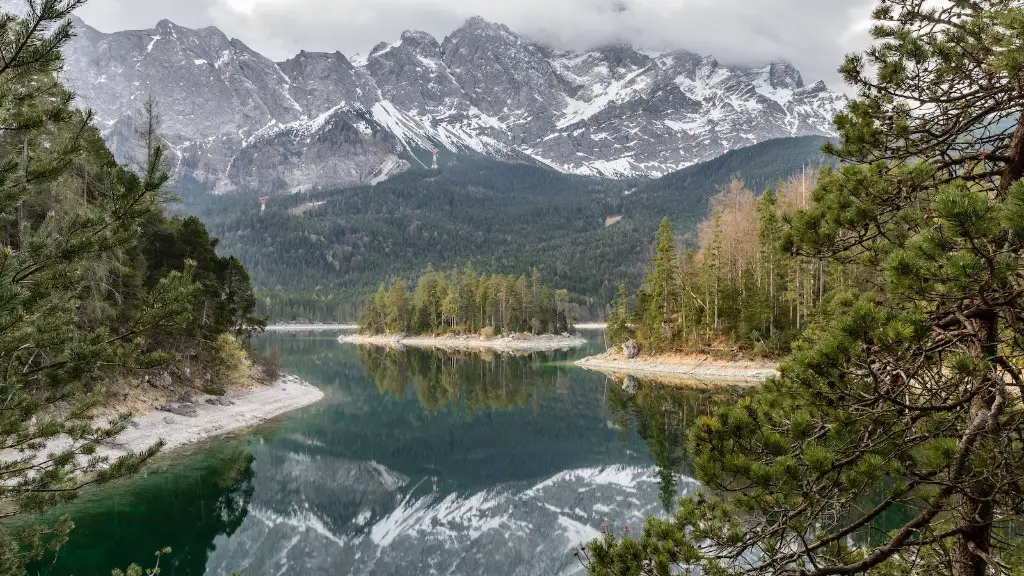An Analysis of Why Lake Michigan is Turning ‘Green’
The water in Lake Michigan is much more than just a picturesque and inviting natural resource – it is a vital part of the Great Lakes system. Unfortunately, in recent years it has been subject to an alarming environmental change – the presence of a mysterious and troublesome green coloration. The discoloration has raised significant concern about what is causing the lake to shift to this unnatural hue. In this article, we will explore the scientific causes of this phenomenon and evaluate the effectiveness of measures already taken to rectify the problem.
At the heart of the issue is a concentration of algal blooms due to increased levels of nitrogen and phosphorous entering the lake. While both of these elements are necessary for life, in excessive concentrations they become pollutants, hindering the balance of photosynthesis and creating an environment where chemical and biological imbalances can occur. In some cases, these imbalances can lead to adverse effects on aquatic life and ecosystems. The elevated levels of nitrogen and phosphorous are largely attributed to industrial activities such as sewage and agricultural runoff.
Invasive species are also playing a role in the problem. Invasive species can disrupt the natural ecological balance by outcompeting native species for resources or by introducing disease or predation. In the case of Lake Michigan, the most notable invaders are the Zebra and Quagga mussels which have drastically altered the make-up of the food web as well as reducing levels of sedimentary nutrients.
The damage created by the nutrient surge and the presence of invasive species has been compounded by the effects of climate change. Warming waters are causing increased straining of the lake’s natural flora and fauna and leading to longer algal blooms. This has resulted in the lake becoming oversaturated with oxygen, creating an environment that is conducive to the growth and proliferation of the green algal blooms.
In response to this problem, local and federal governments have taken steps to reduce the amount of nitrate and phosphorous entering Lake Michigan. This includes regulations on industries that produce the pollutants, better management of agricultural runoff and improved sewage treatment. Additional efforts have been made to curb the spread of invasive species and to improve the lake’s water quality.
Despite these measures, Lake Michigan’s green coloration still persists. With continued research and increased efforts to reduce pollution, however, progress can be made in preserving the health and vitality of the lake. Ultimately, the success of these efforts is reliant on the public’s willingness to take part in the fight against pollution.
Ongoing Debate Over Lake Michigan’s Future
While progress has been made in some areas, the future of the lake remains a matter of intense debate. Scientific studies have concluded that degraded water quality from nutrient pollution and invasive species have irreversibly impacted the lake’s ecosystem, leading to decreased fish abundance and biodiversity.
Meanwhile, there is vigorous debate over the effectiveness of existing measures. For example, some experts are skeptical of using algicides – chemical compounds which destroy certain types of algae – as a reclamation tool because they can further disrupt the natural balance and create further ecological damage. On the other hand, other experts argue that without such measures, the lake’s ecosystem is doomed to suffer irreversible damage.
Despite the controversy, government authorities and conservationists are in agreement that current regulations are not strict enough. The state of Michigan has set a goal of achieving a 40 percent reduction in phosphorus in Lake Michigan and other Great Lakes within the next decade. Some environmentalists argue that this goal is not ambitious enough, calling for more drastic action including the closure of large portions of the lake to recreation and development.
Whatever method is chosen to improve the lake’s condition, it is vital that the public understands the magnitude of the problem and takes action to reduce their impact on the environment – from local initiatives that reduce run-off to larger-scale efforts to curtail climate change.
Risks to Human and Animal Health
The most pressing concern beyond the ecological effects of the nutrient surge is the potential risks to human and animal health. Algal blooms can contain high concentrations of toxins which, if ingested, can lead to the development of neurological and respiratory disorders. Furthermore, the depletion of oxygen in Lake Michigan has caused a depletion of marine life, leading to fish kills and loss in boating and fishing opportunities.
The long-term health impacts of these toxins will not be known until further research is conducted. In the meantime, public health officials are encouraging beachgoers and other recreational enthusiasts to take extra caution when engaging in activities in the lake. Additionally, anglers are warned to discard any catch that appears to be in poor health and to avoid eating large amounts of game fish.
The Role Of Citizens in Protecting Lake Michigan
The struggle to preserve Lake Michigan requires a collective effort from members of the public, regional actors, and governmental authorities. As communities continue to be impacted by changes in the lake’s health and recreation, it is vital thatthey take part in helping to reduce the amount of pollutants being poured into the water. This can be achieved through individual lifestyle changes such as reducing the use of fertilizers and other pollutants and avoiding buying products with excessive packaging and small parts that are likely to end up in the lake.
Governmental organizations have their part to play in the protection of Lake Michigan. This includes the implementation of stricter regulations on the industries responsible for creating pollutants, such as sewage and mining, as well as larger efforts to address climate change. Furthermore, governments should support initiatives that aim to reduce the presence of invasive species by increasing funding for non-native species removal.
It is clear that preventing further environmental damage to Lake Michigan will be an ongoing process. The long-term success of efforts to restore the lake’s health depend on concerted action from all actors, not just local and federal agencies. For their part, citizens must understand the urgency of the issue and work to reduce their contribution to the degradation of this vital ecological asset.
Growing Awareness And Activism Around Lake Michigan Preservation
Given the far-reaching implications of Lake Michigan’s decline, local action on the matter has been met with considerable urgency. In recent years, a number of initiatives have been undertaken to raise awareness of the ecological crisis and to aid in the efforts to reverse the damage. In Michigan and other states, citizen groups such as the Alliance for the Great Lakes and Restore Our Waters, have worked to mobilize local communities to take part in the preservation of the lake.
In addition, public relations campaigns have been launched to inform the public of the dangers posed by the nutrient surge and the devastating effects of invasive species. These efforts have helped to spark a public discussion on the need for environmental change and have in some cases led to successful lobbying efforts to create stricter regulations and funding for lake restoration.
Beyond public outreach, there is an ever-increasing role for the scientific community in helping to inform policy decisions. Scientists are playing an active role in developing strategies to reduce pollutants and researching the complex web of interactions between the land and aquatic ecosystems. Such studies can provide invaluable insight into the mechanisms that drive the lake’s decline and help to shape future solutions.
Conclusion and Summary
The future of Lake Michigan is inextricably linked to the understanding, awareness and action of those it affects. In recent years, the lake has seen a worrying shift to an unnatural and undesirable green hue. Analysis of the issue points to increased levels of nitrogen and phosphorous entering the lake as one of the primary causes. These materials are largely attributed to industrial activities and the presence of invasive species. Last but not least, climatic shifts have played a part in exacerbating the problem and disrupting the lake’s delicate balance.
In response, a number of initiatives have been undertaken to reverse the damage. These include new regulations, algicide treatments and public outreach campaigns. Meanwhile, people living around the lake are being urged to take steps to limit their own contribution to the problem. Ultimately, the success of these efforts is reliant on the public’s willingness to take part in preserving the long-term health of the lake.





